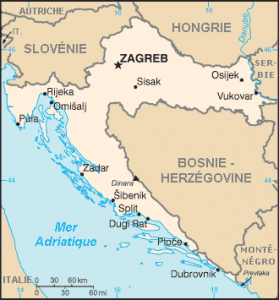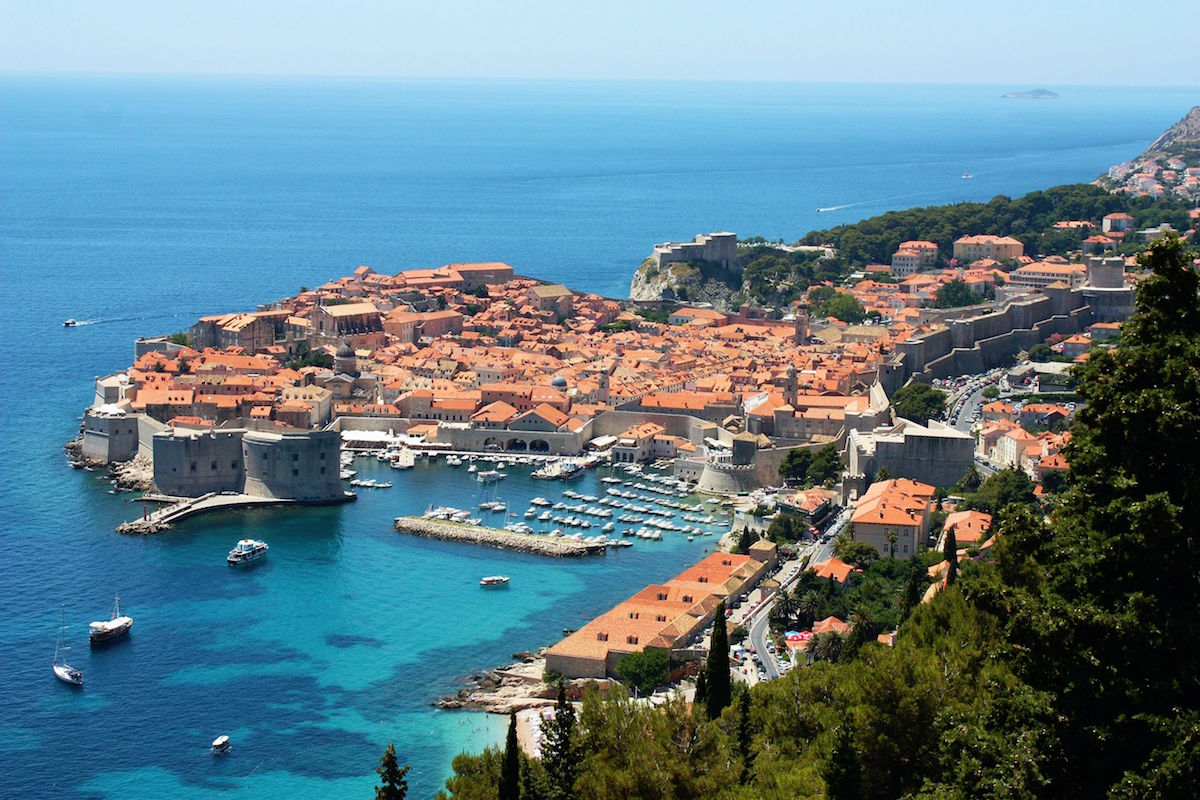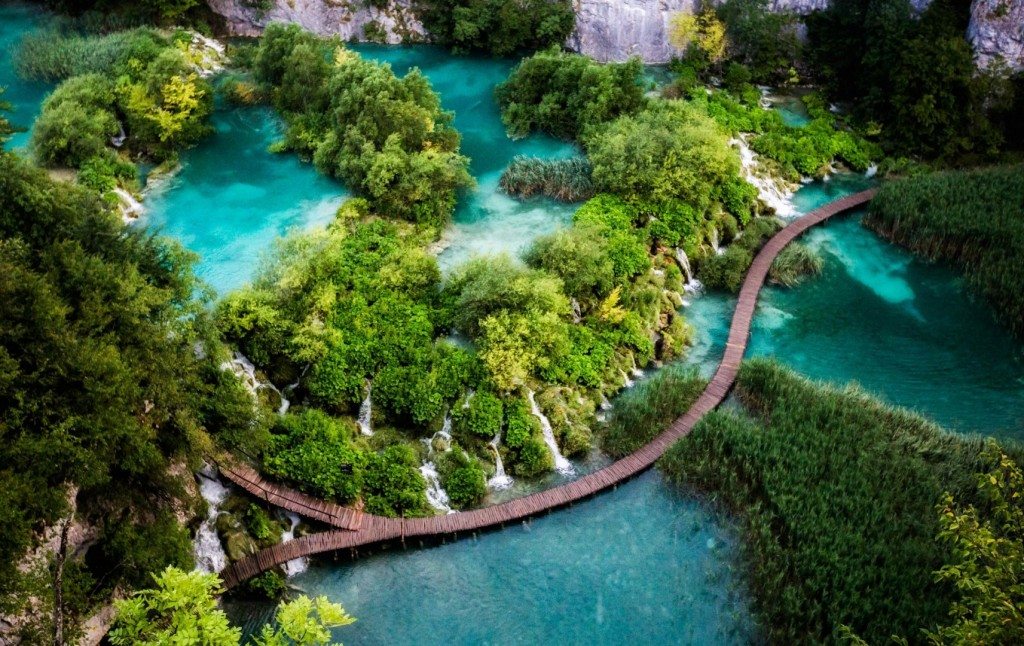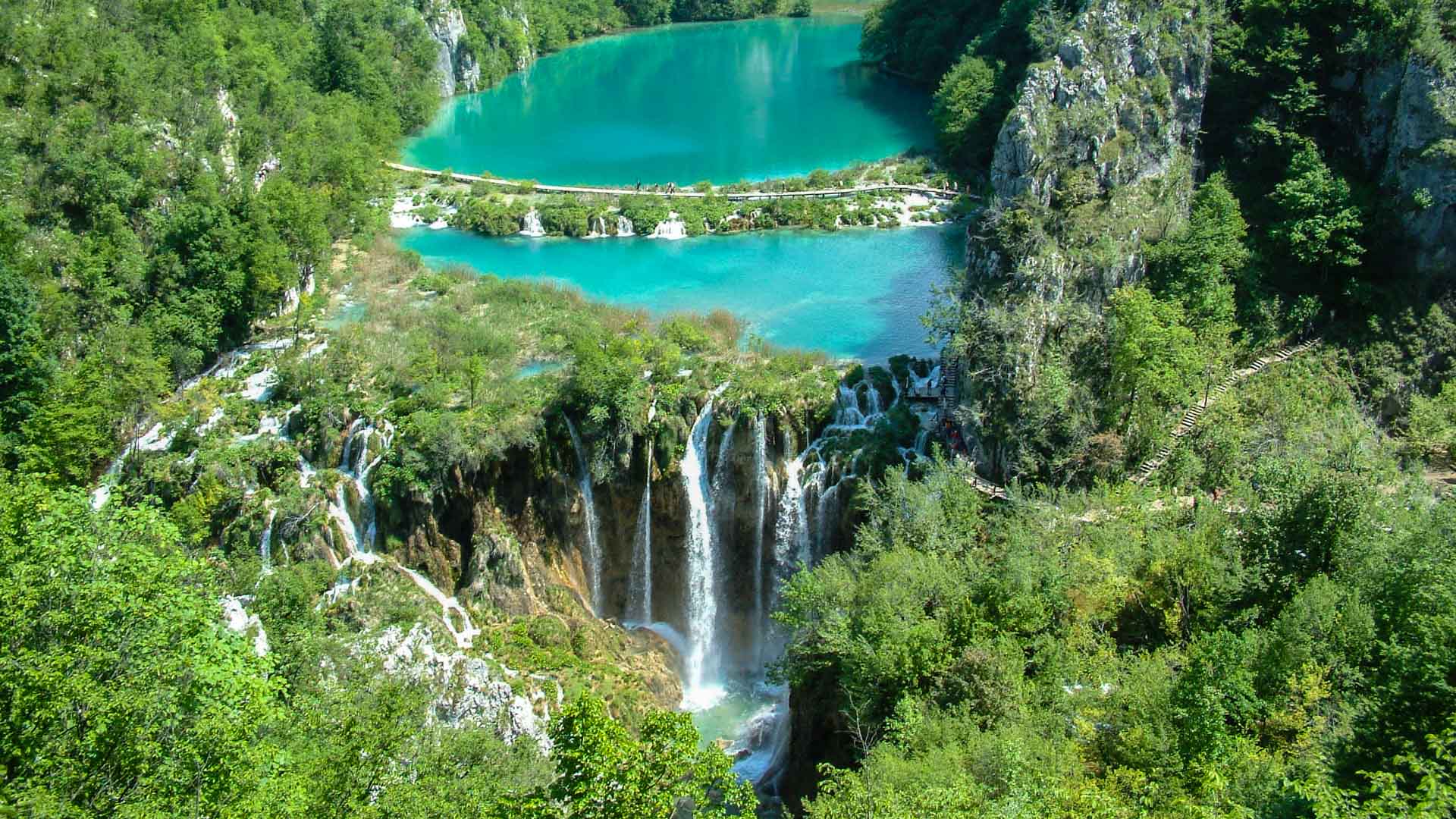Croatia March 16, 2020 Adriatic Sea , Alps , Austria-Hungary , Austro-Hungarian Empire , Balkan peninsula , Balkans , Croatia , Danube , Dinaric Alps , Dubrovnik , Europe , European Union , islands , Mediterranean Sea , NATO , Plitvice , Plitvice Lakes National Park , Republic of Croatia , Republika Hrvatska , South Europe , tourism , Yugoslavia , Zagreb Official name Republic of Croatia Name in local language Republika Hrvatska (hr) Continent Europe Subcontinent European Union Population (ranking: 133e ) 4,076,246 inhabitants (2019) Population growth -0.72 % / year Area 56,594 km² Density 72.03 inhabitants / km² GDP (ranking: 80e )60.806 billions $USD (2018) GDP/capita (ranking ) 14,869 $USD (2018) GDP growth 2.60 % / year (2018) Life expectancy (ranking ) 78.30 years (2018) Birth rate 9.00 ‰ (2016) Fertility rate 1.43 children / woman (2011) Death rate (ranking ) 12.30 ‰ (2016) Infant mortality rate (ranking ) 3.80 ‰ (2014) Literacy rate 99.27 % (2015) Official languages Croatian Currency Kuna (HRK) HDI (ranking: 67e )0.837 / 1 (2018) EPI (ranking )65.45 (2018) Government Unitary parliamentary constitutional republic Head of State President Zoran Milanović National Day 8 October ISO Codes HR, HRV Demonym Croatian Tourists (ranking ) 15,593,000 people (2017)
An economy that still relies too much on tourism Croatia is a southern European state located on the shores of the Adriatic Sea. It is part of the group of countries of the former Yugoslavia that became independent in the early 1990s. It shares borders with Slovenia and Hungary to the north, Serbia and Bosnia and Herzegovina to the east, and Montenegro to the extreme south.
Dubrovnik, Croatia. Photo: Bracodbk, Wikipedia Plitvice Lakes National Park, Croatia (UNESCO World Heritage register) Plitvice Lakes National Park, Croatia (UNESCO World Heritage register) Urban areas (2017) Urban areas Population Zagreb 1,117,704 inhabitants Split 346,314 inhabitants Rijeka 245,054 inhabitants Osijek 103,377 inhabitants Zadar 75,528 inhabitants Dubrovnik 44,205 inhabitants Vukovar 23,523 inhabitants
Administrative divisions Counties (Županije) Population Area Bjelovar-Bilogora 111,867 inhabitants 2,638 km² City of Zagreb 802,338 inhabitants 640 km² Dubrovnik-Neretva 121,970 inhabitants 1,782 km² Istria 208,105 inhabitants 2,813 km² Karlovac 120,321 inhabitants 3,622 km² Koprivnica-Križevci 110,976 inhabitants 1,734 km² Krapina-Zagorje 127,748 inhabitants 1,230 km² Lika-Senj 46,888 inhabitants 5,350 km² Međimurje 112,089 inhabitants 730 km² Osijek-Baranja 290,412 inhabitants 4,149 km² Požega-Slavonia 71,920 inhabitants 1,821 km² Primorje-Gorski kotar 289,479 inhabitants 3,590 km² Šibenik-Knin 103,021 inhabitants 2,994 km² Sisak-Moslavina 157,204 inhabitants 4,448 km² Slavonski Brod-Posavina 148,373 inhabitants 2,027 km² Split-Dalmatia 452,035 inhabitants 4,524 km² Varaždin 170,563 inhabitants 1,260 km² Virovitica-Podravina 79,111 inhabitants 2,021 km² Vukovar-Sirmium 165,799 inhabitants 2,448 km² Zadar 169,581 inhabitants 3,643 km² Zagreb 314,549 inhabitants 3,078 km²
See also 




